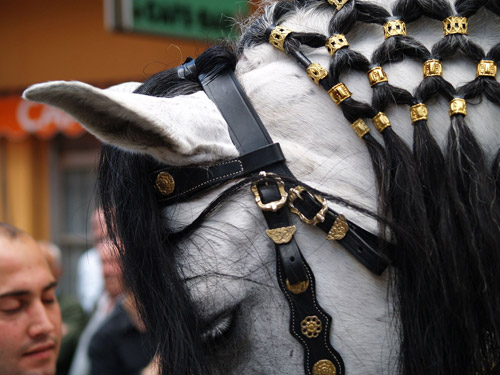This years British Showjumping Regional Intro Leagues have now drawn to a close with the league winners now announced – congratulations to our local winners competing in the Eastern League!Competitors have been picking up points across the country at Intro shows hoping to top the leader board for their region. This year, all winners of these leagues will be collecting their awards at the British Showjumping Awards Ball this October.
Essex riders were well represented; some great results included Southend on Sea based Toni Evans winning both the junior 1m and junior 90cm and Hornchurch based Brian Young winning the senior 80cm with his wife’s fourteen year old mare, Lysia.
The winners of the 2010/2011 Eastern Regional Leagues are;
Absolute Horse League
- Senior 1m: DRUMHOWAN CAVALIER and Mrs Michaela Huntington
- Senior 90cm: PHANTOM DREAMAKER and Miss Hannah Vincent
- Senior 80cm: LYSIA and Mr Brian Young
- Senior 70cm: APACHE DISCOVERY and Miss Jess Joslin
- Junior 1m: FANTASIA ICE and Miss Toni Evans
- Junior 90cm: CARRBROOK SPECIAL EDITION and Miss Toni Evans
- Junior 80cm: JUST MALCOLM and Miss Ruth Gayton
- Junior 70cm: JAYS GIRL II and Miss Hallie Lunn
Chiltern & Thames League
- Senior 1m: CARLINGFORDS TOUCH and Miss Charlotte Edwards
- Senior 90cm: TARA III and Miss Fiona Christian
- Senior 80cm: TARA III and Miss Fiona Christian
- Senior 70cm: COSMIC GIRL II and Mr Seb Sharpe
- Junior 1m: JUST A DASH and Miss Abbie Mccullock
- Junior 90cm: BONNY DUCHESS and Master Sebastian Bishop
- Junior 80cm: DUNCRYNES JUNGLE BUNNY and Miss Katie Waldock-Smith
- Junior 70cm: WEYDOWN SUNFLOWER and Miss Katie Waldock-Smith
This is the last year that the regional leagues will run as they will be now replaced by the Club Membership Regional Leagues. These new Club leagues run across the eight regions which are Scotland, Northern, West Midlands, Wales, East Midlands, East, South East and the South West.
The club leagues run from the 1st June through 31stMay and will enjoy their own regional championships during the summer from 2012 onwards. The leagues host a 70cm, 80cm, 90cm and 1m for both ponies and horses with points been awarded for placings and double clears.
Read more about the Eastern Regional winners by clicking here.















































